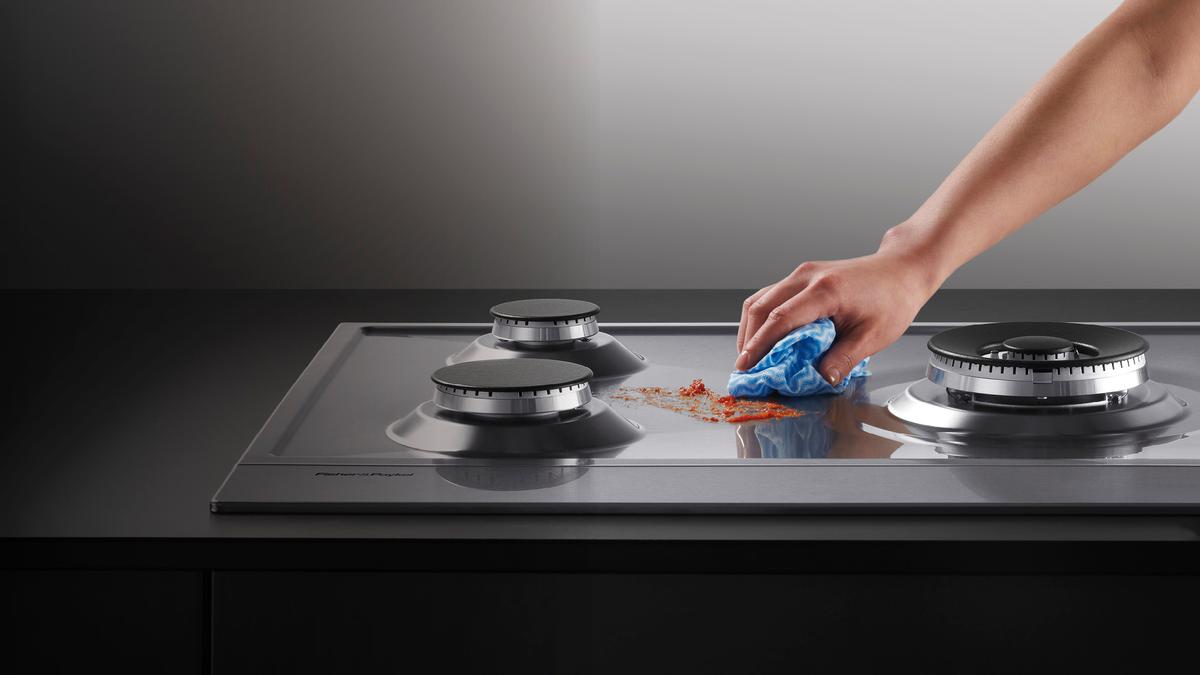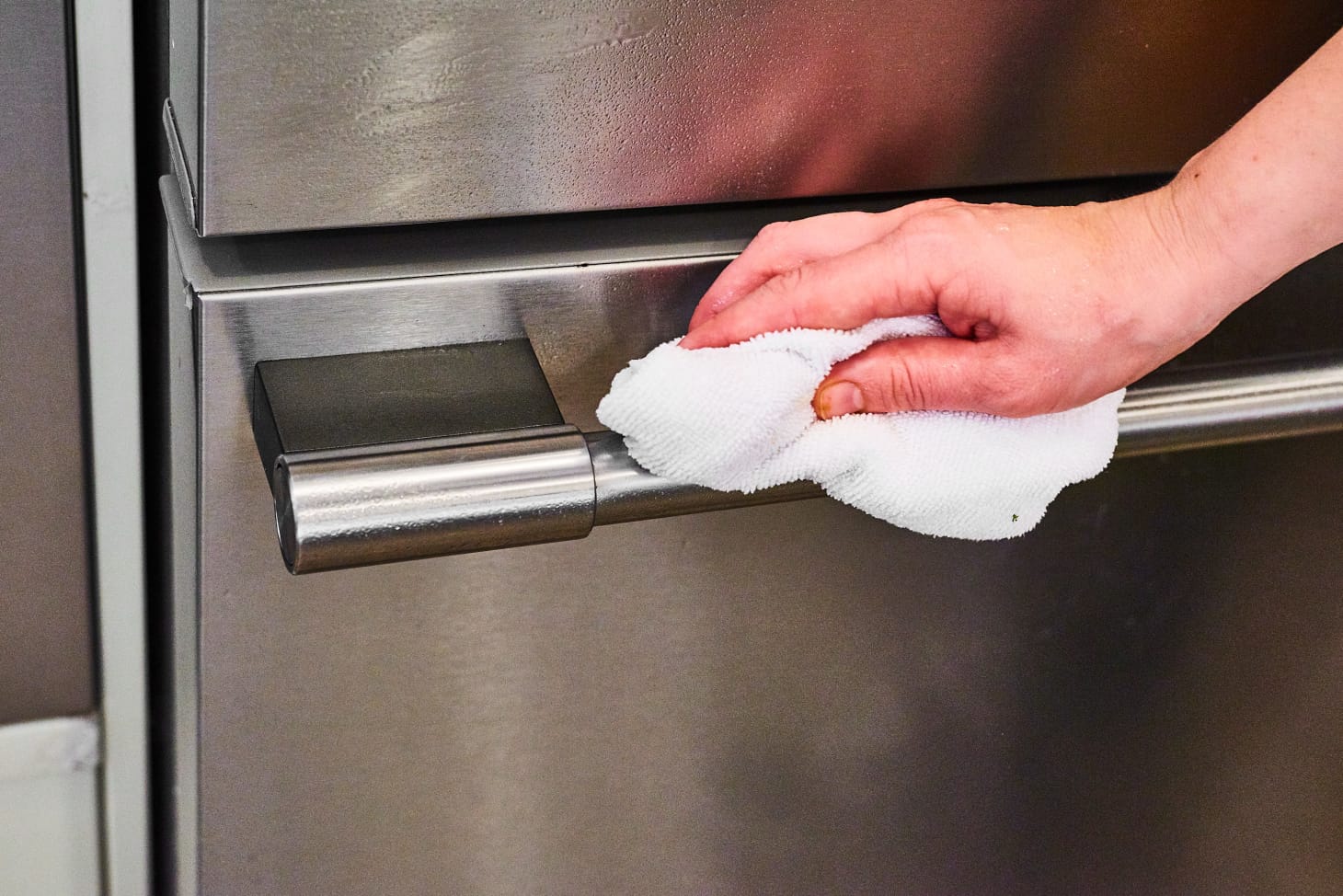How to Clean a Stainless Steel Stovetop: A Comprehensive Guide
I. Introduction

Maintaining a clean and shiny stainless steel stove top is not only important for aesthetic purposes but also for sanitation and functionality. A dirty stove top can harbor bacteria and affect the performance of the burners. In this article, we will discuss the step-by-step process of cleaning a stainless steel stove top to ensure its longevity and pristine appearance.
II. Gathering the Necessary Supplies
A. Choosing the right cleaning agent
When it comes to cleaning a stainless steel stove top, you have several options for cleaning agents. Some recommended options include vinegar, dish soap, and specialized stainless steel cleaners.
- Vinegar: Vinegar is a versatile and natural cleaning agent that can effectively remove stains and grease from stainless steel surfaces. It is safe to use and does not leave residue or harmful chemicals.
- Dish soap: Dish soap is another commonly used cleaning agent for stainless steel surfaces. It helps cut through grease and grime, making it an effective choice for regular cleaning.
- Specialized stainless steel cleaners: There are various cleaners available in the market specifically formulated for stainless steel surfaces. These cleaners are designed to remove stubborn stains, restore shine, and create a protective barrier against fingerprints and smudges. Consider safety and effectiveness when choosing a specialized cleaner.
B. Assembling cleaning tools

To properly clean your stainless steel stove top, you will need the following cleaning tools:
- Microfiber cloth: Microfiber cloths are gentle on stainless steel surfaces and are highly effective at picking up dirt and grime without leaving streaks or scratches.
- Soft-bristle brush or sponge: A soft-bristle brush or sponge can be used to remove stubborn stains and stuck-on food particles. Make sure to choose one that is safe for use on stainless steel surfaces.
- Paper towels: Paper towels are handy for wiping away excess cleaning solution and drying the stove top.
- Plastic scraper (optional): In some cases, a plastic scraper may be needed to remove stubborn, burnt-on food residues without scratching the surface. Use it cautiously and only when necessary.
III. Preparing the Stove Top for Cleaning
A. Turning off and cooling down the stove
Before starting the cleaning process, make sure the stove is turned off and has completely cooled down to avoid any burns or accidents.
B. Removing loose debris and food particles

Using a dry paper towel or a soft brush, gently sweep away any loose debris and food particles on the stove top surface. This step will make the cleaning process easier and more effective.
C. Using a damp cloth or sponge to wipe off stuck-on residue
Dampen a cloth or sponge with water and wring out any excess moisture. Gently wipe off any stuck-on residue or spills on the stove top. If needed, you can add a small amount of dish soap to the cloth or sponge to help remove stubborn stains or grease.
IV. Cleaning the Stainless Steel Stove Top
A. Method 1: Vinegar or Dish Soap Solution To begin the cleaning process, create a mixture of equal parts vinegar (or dish soap) and water in a spray bottle. Shake the bottle to ensure the solution is well-mixed.
- Spray the solution onto the surface of the stove top, covering the areas that need cleaning.
- Allow the solution to sit for a few minutes to loosen dirt and grime. This will make it easier to remove during the scrubbing process.
- Gently scrub the surface with a damp microfiber cloth or soft brush, using circular motions to effectively lift and remove the dirt.
- Once the dirt is lifted, wipe away the solution and dirt with a clean, damp cloth or sponge. Rinse the cloth or sponge as needed.
- To prevent water spots, dry the stove top thoroughly with a microfiber cloth. This will leave a shiny and streak-free finish.

B. Method 2: Specialized Stainless Steel Cleaner If you prefer to use a specialized stainless steel cleaner, follow the manufacturer’s instructions for the specific product you have chosen.
- Apply the cleaner to the stove top surface, making sure to cover the areas that require cleaning.
- Allow the cleaner to sit for the recommended amount of time. This will vary depending on the brand and product.
- Using a soft cloth or sponge, wipe away the cleaner, following the grain of the stainless steel. This helps to maintain a uniform and polished appearance.
- Once the cleaner is removed, buff the stove top with a clean microfiber cloth. This will enhance the shine and leave a streak-free finish.
V. Troubleshooting Persistent Stains and Marks
A. Addressing stubborn stains or burnt-on food For stubborn stains or burnt-on food, initiate light scrubbing using a soft brush or sponge. Apply gentle pressure and use circular motions to lift the stains. If necessary, utilize a plastic scraper to carefully scrape away more stubborn residue. Take caution to avoid scratching the surface.
B. Removing water spots and fingerprints To remove water spots and fingerprints, dampen a cloth with white vinegar or a stainless steel cleaner. Gently wipe the affected areas, applying light pressure as needed. After wiping away the spots and fingerprints, buff the stove top with a dry microfiber cloth to achieve a streak-free finish.
VI. Regular Maintenance Tips
A. Daily wiping after each use To maintain the cleanliness of your stainless steel stove top, make it a habit to wipe it down after every use. Use a damp cloth or sponge to remove any spills, stains, or residue. This prevents the buildup of grime and makes deep cleaning easier in the long run.
B. Weekly deep cleaning routine Implementing a weekly deep cleaning routine ensures the longevity and pristine appearance of your stainless steel stove top. Follow the cleaning methods discussed in this article or choose a day of the week to give your stove top a thorough cleaning, removing any accumulated dirt or grease.
C. Preventing scratches and damage through proper care To prevent scratches and other damage to your stainless steel stove top, take some precautionary measures. Use soft cloths or sponges when wiping or cleaning the surface. Avoid using abrasive cleaning agents or brushes that can scratch the stainless steel. Additionally, be mindful of the utensils you use on the stove top to avoid any accidentally caused damage.
VII. Conclusion
Regular cleaning and maintenance of your stainless steel stove top not only keep it looking shiny and pristine but also ensure its longevity. By following the steps and tips provided in this article, you can easily achieve a clean and beautiful stainless steel stove top that enhances the overall aesthetic of your kitchen.

